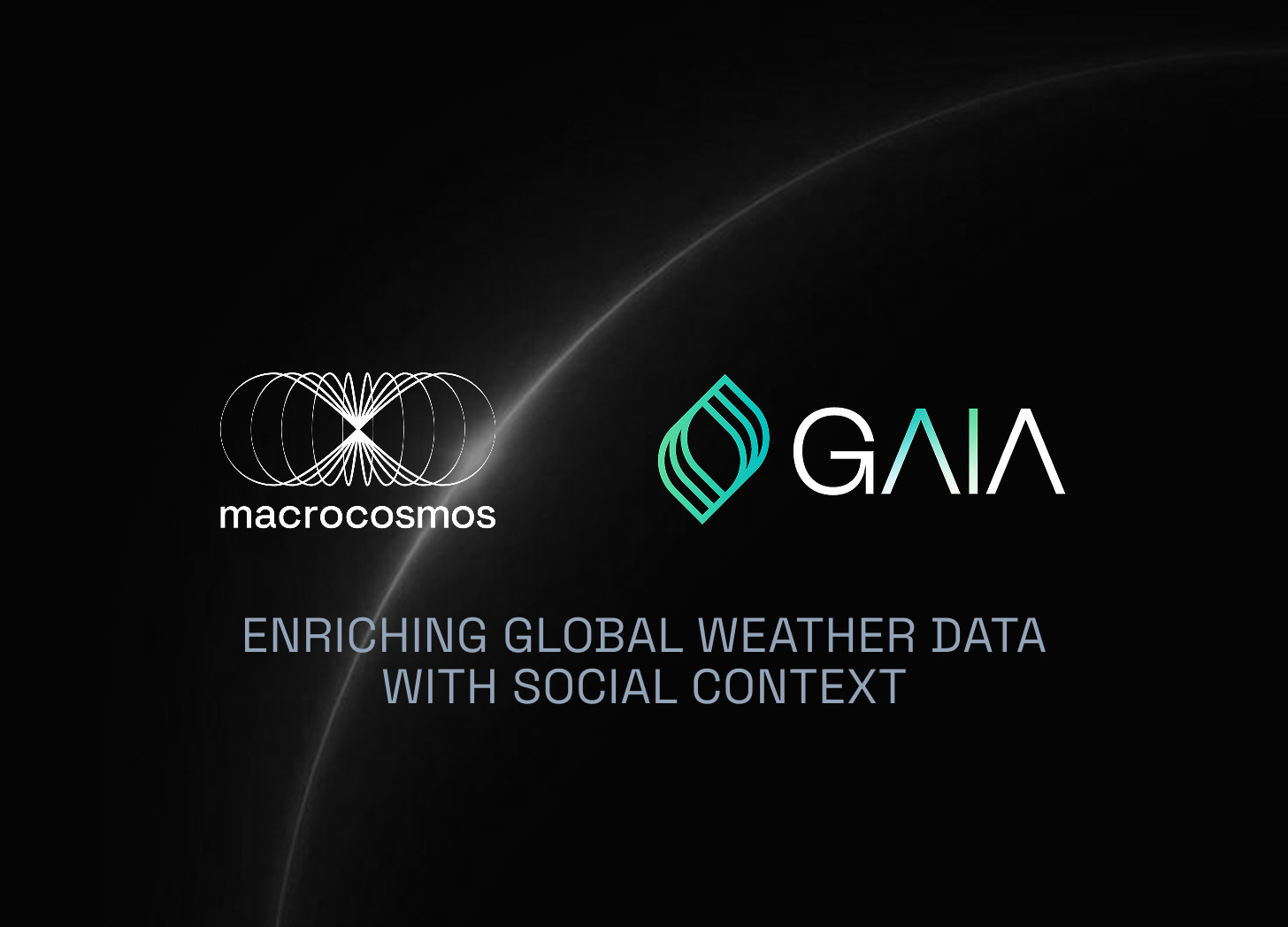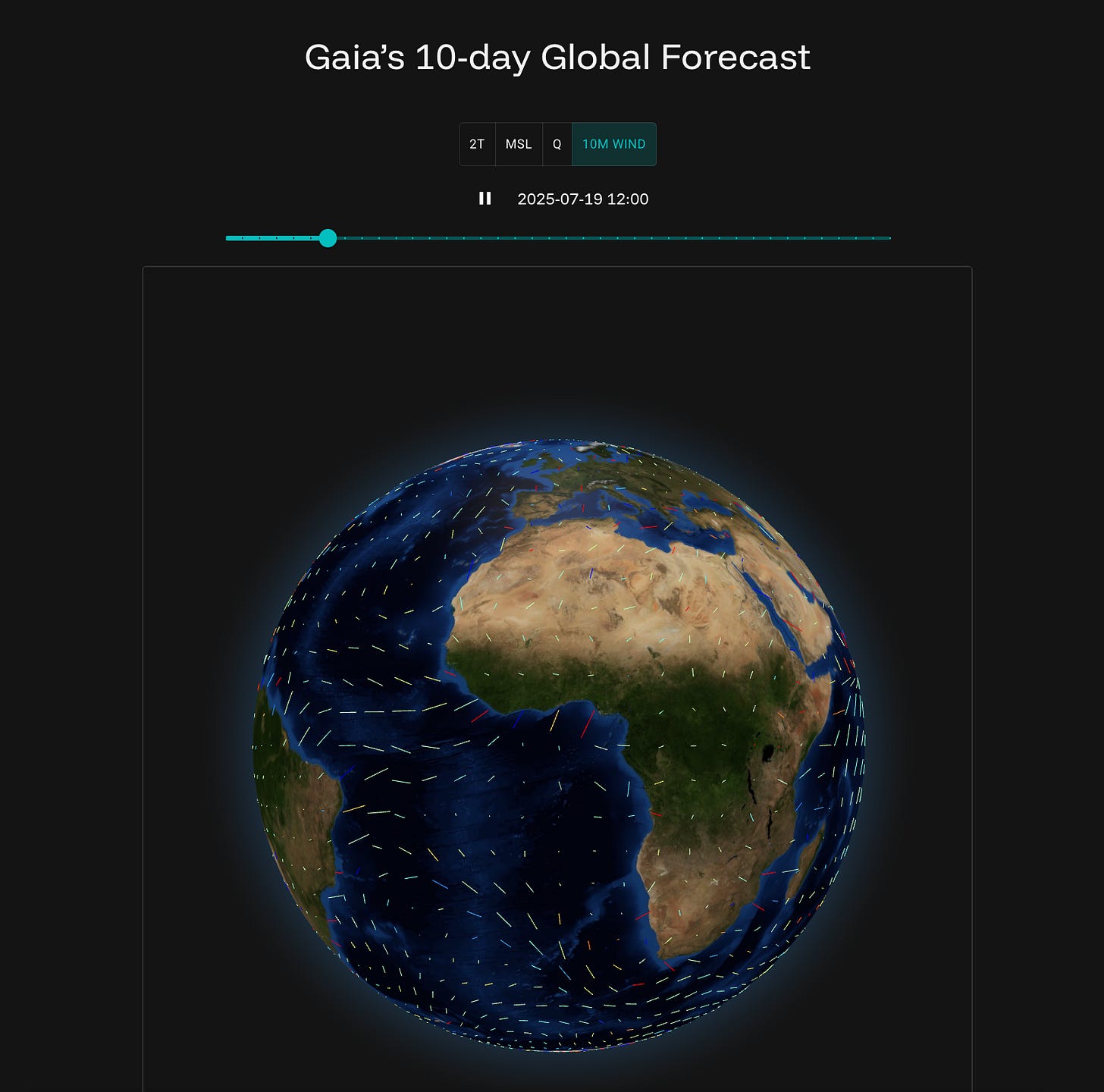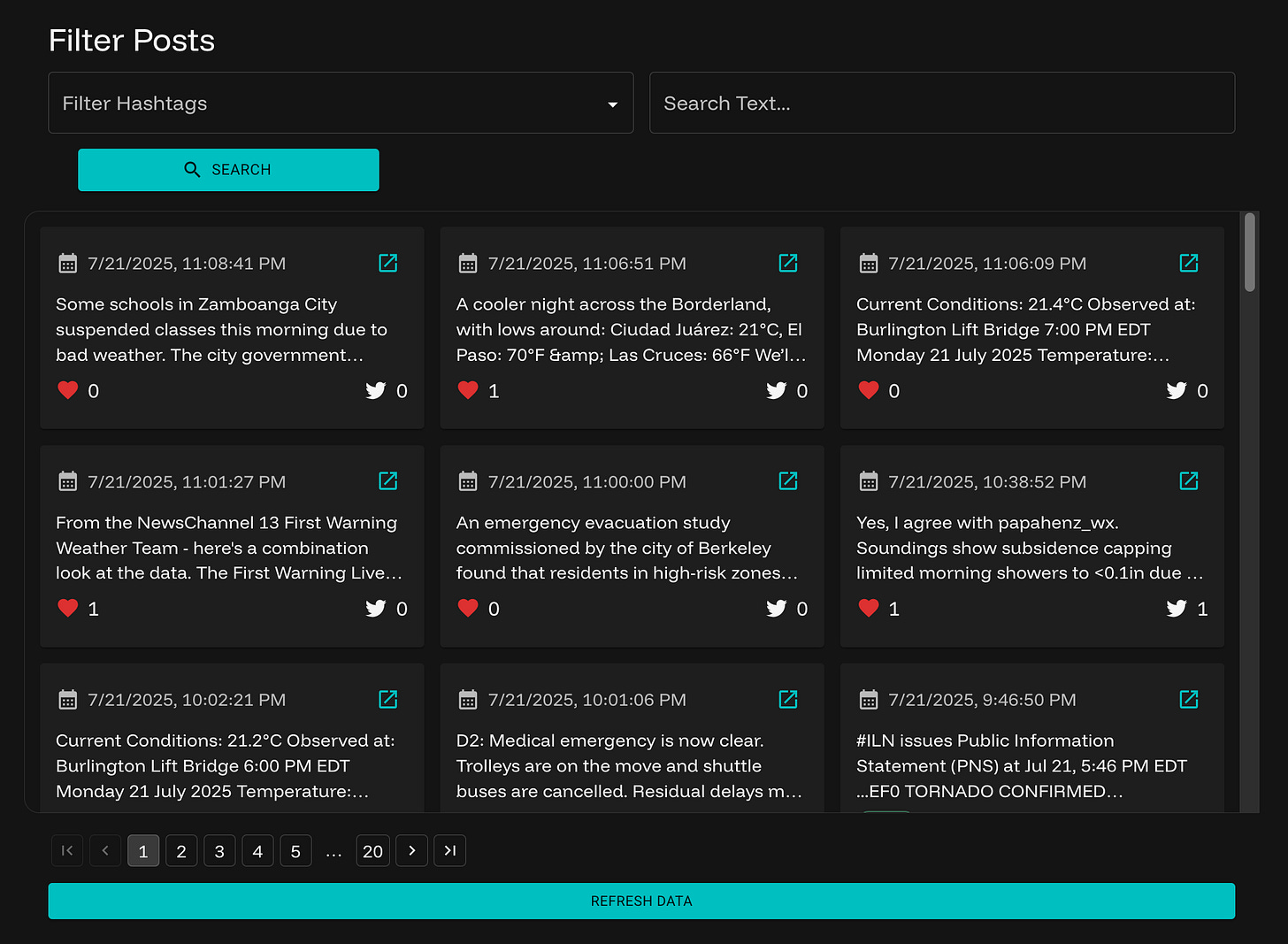Global weather, social context: How SN13 is powering SN57's weather data innovation
As global weather grows more volatile, access to accurate weather data becomes more important. That's what Gaia is creating - here's how Data Universe is helping them do it
Data Universe is one of the fastest, most powerful tools for collecting social media data in the world. The speed at which it amassed billions of rows of social posts demonstrates how powerful Bittensor and its miners can be, when properly coordinated.
But while data is valuable, much depends on how organizations use it. In the right hands, social media data can be the edge - sharpening insights, providing context, and driving decision making in real time.
Our partnership with Subnet 57, Gaia demonstrates how social media data can power performance across multiple use cases - and contribute innovative solutions to the complex and increasingly urgent challenges of climate change.
Gaia generates accurate, reliable weather forecasts, using Bittensor’s distributed systems to drive value in a market worth $5-10 billion. As climate change accelerates, and funding cuts slash deeper into outdated legacy systems, Gaia’s decentralized alternative can step in to fill the void, particularly benefiting those low-data regions in the global south.
In May 2025, Data Universe announced its partnership with Nickel5, the team behind Gaia, to augment SN57’s global weather forecasting task with social media data. We shared five use cases, starting from the most basic to the most complex, exploring how SN13’s data collection could enable insights and capabilities for SN57’s users.
Weather task
Gaia incentivises miners to generate truly high-quality, standard 10-day, medium-term ensemble weather forecasts. Across nine variables and 13 pressure levels, Gaia leverages cutting-edge models like Microsoft Aurora to produce a detailed, multilayered model of the weather. From mean sea level pressure to 2m temperature and wind components, SN57’s global weather task gathers and stores this data in Zarr arrays.
This approach isn’t just more efficient - it also boosts robustness and brings in model variety, which is crucial for accuracy. Forecasts drive critical decisions in so many sectors – agriculture, disaster response, aviation, energy management - and driving efficiencies through Bittensor could save billions in economic losses from extreme weather events. Already, these losses exceed $250bn - and as the weather becomes more volatile, these costs are likely to grow.
The Data Universe difference
‘SN13 has already been a fantastic partner, significantly enhancing our platform and bringing crucial real-world context to our scientific data,’ says Gabriel, of Nickel5.
The simplest way to deploy social media data is to create a bespoke newsfeed based around selected keywords. So that’s where we started - and you can see the newsfeed here.
Nickel5 successfully integrated SN13's API to gather official Gaia posts, dynamically populating an enhanced newsfeed with real-time posts from X and Reddit (and soon, YouTube) based on all the relevant keywords and hashtags: “hurricane update," "climate research," specific storm names, and so on.
The newsfeed allows Gaia to stay connected to current events in real time, becoming the ‘Ecosystem Pulse’ for both their internal teams and for their users. It also allows Gaia to track real-time weather activity, giving immediate, on-the-ground context that complements their scientific forecasts. ‘We can literally see how events are perceived and impact communities as they unfold,’ Gabriel explains, ‘often spotting things our models might not instantly catch.’
‘It's really transformed our platform into a richer source for what's trending and being discussed in the wider environmental and weather community.’
From immediate answers to historical insights
Now, we’re working to empower Gaia with access to SN13’s vast historical archives of social data. This will enable them to make specific requests for topics, date ranges, and types of data. Analyzing this data can highlight areas where public information was lacking or where SN57’s forecasts had significant real-world implications, proving Gaia’s impact and guiding future research and development for our weather models.
By enriching their understanding of past weather events, historic datasets can direct SN57’s scientific research, providing contextual validation. It will allow Gaia’s team to cross-reference their past predictions (like for droughts or specific storm tracks) with actual public discussions and sentiment around those events, offering practical, real-world validation for our model outputs that goes beyond numbers alone.
On the horizon
Partnering more closely together opens a whole range of possibilities:
Multi-Party Computation (MPC): This is a cryptographic protocol that enables secure collaboration on computations without revealing sensitive data to any single participant. This unlocks more secure computations, from which we can derive insights from sensitive or even proprietary weather data without revealing the raw data itself.
LLM-Powered Interaction: We can then connect this MPC-enabled API with Large Language Models, which could allow users to query a secure Gaia ‘Weather Assistant’, effectively allowing them to talk to Gaia’s vast weather database. This would transform the impenetrable technicalities of weather data into interactive, queryable, and actionable insights without the need for data science.
Social Validation & Context Layer: Once Gaia's advanced weather models generate significant predictions, Gaia can gather social media observations both during and after the event from predicted impact zones, compare them against the initial forecasts, and identify areas where models performed exceptionally well or faced challenges. This rich contextual data can refine future model outputs and enhance science communication strategies.
Scheduled for release this summer, Gaia’s Global Weather Task API - which will provide access to all our high-quality forecasts - will pave the way for further integrations with SN13’s social media data. And by enabling clients to access the data collected by miners, SN57 can deepen its understanding of which data points are most valuable to which organizations.
Most weather data is local; few are global, and fewer still are accurate - or affordable. Gaia aims to be all three. Social media contextualization helps Gaia to stay agile, up-to-date, and relevant - which gives it the edge over mainstream competitors.
Towards life-changing research
Data-Universe’s real-time pipeline brings Gaia more precise forecasting analytics, a consistently updated emergency weather feed, and supports their scientific research. This is where Bittensor’s power lies: harnessing distributed networks, incentivizing intelligence, and driving relentless improvement. With SN13’s social context, Gaia can enrich their global weather data and revolutionize how it is accessed, shared, and understood.
To learn more about Data Universe and Gaia, come and chat in our Discord and Telegram.









